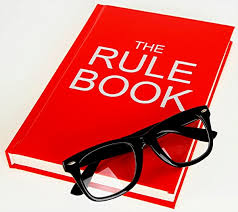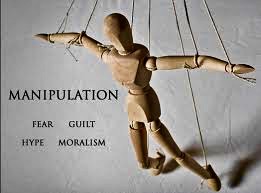I have done several blogs on narcissism over the years, as it is a frequent attribute of many of the parties involved in estate litigation.
Narcissists amongst other characteristics, have a great feeling of self entitlement which frequently is displayed by parties in estate litigation.
There are two types of narcissism: grandiose and vulnerable, and not all narcissists are the same as there is a spectrum.
Identifying a narcissist at first is not always easy as they are invariably charming people, but after getting to know the person better some of the following characteristics will be noted.
A random list of 15 of the characteristics of narcissism are as follows:
1. Narcissists lack empathy and are therefore unable to recognize or understand the needs and feelings of others so typically they tend to speak and think only of themselves, often about their physical appearance talents or achievements. The comments tend to exaggerate their abilities in these areas;
2. They believe they are superior and even grandiose in terms of their self-importance. This leads to belittling of others by focusing on their flaws, which for a narcissist is an effective way to hide their own shortcomings and preserve their self-image;
3. Having a sense of self entitlement, narcissists expect others to offer them special favors and fulfill the requests without question. The behavior compares to that of a toddler who never learns that he or she is not the center of the world and becomes enraged when others don’t need his or her immediate demands;
4. Because narcissists consider themselves superior they fantasize about how much more powerful they will be and how much more beautiful or how much richer than other people. While it is good to have goals in life, the narcissist goals are almost boundless in their ambition;
5. Upon first impression narcissists come off as incredibly charming and confident, but as the relationship develops their behavior becomes demeaning and aggressive. They often seek out positions of power in leadership and will turn on the charm to manipulate others into giving them what they want. Many people are thus attracted to narcissists as they are confident, charismatic and exciting;
6. Narcissists are extremely competitive and want to strive to win whatever it takes. There are only losers and winners in their mind;
7. While appearing confident on the outside, most narcissists are in fact very sensitive and care very deeply about maintaining their idealized image of themselves. As a result, any type of perceived insult or disapproval can result in a large personal attack which the narcissist typically holds as a grudge and never lets go of it;
8. Narcissists tend to fill their minds with elaborate fantasies about success, power, brilliance, beauty or the perfect mate, and thus feel they should have the best of everything. Because the fantasies are rarely rooted in reality, it can lead to immense frustration and anger when these visions are not achieved;
9. Again, despite appearing confident on the outside, narcissists are often incredibly insecure and have very fragile self-esteem. As such, they require constant praise, but this fragility also makes the narcissist highly reactive to criticism of any sort;
10. Narcissists often do not have a problem in getting people to do what they want, and have no problem taking advantage of others with little to no regard for the feelings are interests of those people as a result of this behavior, narcissists often have very tumultuous friendships and romantic relationships that are quite short lived;
11. Narcissist typically crave attention at all times and will seek it out by such means as dominating conversations. They feel compelled to talk about themselves and exaggerate their accomplishments. A grandiose narcissist craves attention and often receives it by being outspoken, arrogant, self -loving and entitled;
12. Narcissists often lack empathy and are unable to empathize with others or understand other people’s perspectives or comprehend their struggles. A typical comment might be a complaint about how annoying his or her own father is in speaking to someone whose father has just died;
13. Vulnerable narcissists live with the worry of being exposed for their flaws, which in turn will make them feel humiliated and shamed. The need to be perfect and stem either from wanting to satisfy themselves are being perfect, to please others, not all narcissists are perfectionists, but it is a common trait. This type of narcissist needs to achieve what they consider a flawless “performance” in order to achieve fulfillment;
14. Narcissists often eventually develop depression, especially those who are vulnerable narcissists as they do not know how to work through motions properly. Pathological grandiose narcissists can have an inflated ego and more arrogant personalities. When they experience a personal or professional failure, isolation, or lack of accomplishment, it may trigger depression;
15. Narcissists are not always the best at regulating their emotions as they have compromised or fluctuating abilities and emotion regulation. Studies have found that narcissists have difficulties in assessing both their own and other people’s emotions. For example, one of the last things a narcissist wants to encounter is a person who appears to have something that they lack. That leaves the narcissist no choice but to act as if that person is beneath them, and the patronizing attitude is a defense mechanism narcissists may turn to when they feel their emotions are threatened. A narcissist may result to insults or name-calling against the person that they in fact are envious of.










